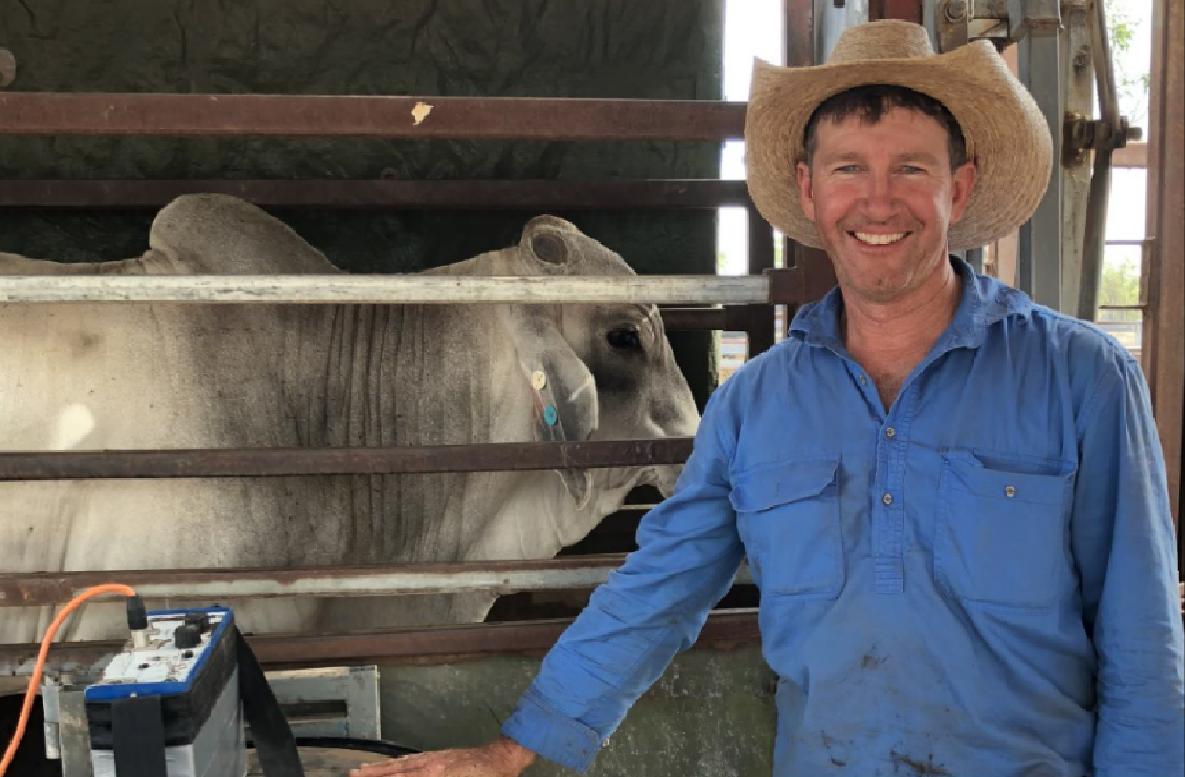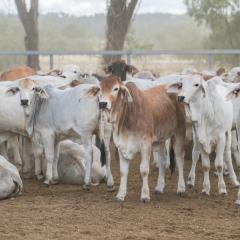UQ beef researchers are taking on the ambitious task of DNA sampling 30,000 cows and heifers in their quest to boost the fertility of northern herds.
QAAFI scientists aim to develop a DNA test to predict the value of an animal’s genetics for fertility.
The ambitious project is supported by the MLA Donor Company (with investment matched by the Australian Government) and the Queensland Department of Agriculture and Fisheries.
 Project leader Professor Ben Hayes said fertility was a critical trait for northern producers. “Fertility is the main driver of productivity and profitability of northern beef producers, but weaning rates – an indication of fertility – can be as low as 40 per cent in some herds,” he said.
Project leader Professor Ben Hayes said fertility was a critical trait for northern producers. “Fertility is the main driver of productivity and profitability of northern beef producers, but weaning rates – an indication of fertility – can be as low as 40 per cent in some herds,” he said.
“Lifting the reproductive performance of breeding herds is challenging for producers who manage extensive enterprises, (because) annual or biannual mustering limits the opportunity to record performance and track fertility traits across generations.”
The answer, he said, was the genomic equivalent of an estimated breeding value (EBV). EBVs are already widely used in the beef industry to assess an animal’s performance traits compared to the breed average. A DNA test, however, would provide a highly accurate prediction tool of true genetic merit. This would enable young bulls with excellent fertility genetics to be identified and used early in life.
DNA tests for fertility have been commercially used in the dairy industry for more than five years but the physiological differences between, for example, a Holstein and a Brahman, mean they are not transferable. There is a useful genomic-based breeding value for days to calving, but only for the Brahman breed.
Importantly, this project is commercially focused and aims to develop DNA tests that are not limited to a specific breed, so researchers are DNA-sampling different breed compositions – including crossbred cattle – across Queensland, the Northern Territory and Western Australia.
Many genes affect the trait of fertility, so Professor Hayes and his team have set out to record fertility traits for a large number of animals, drawing on female stock from collaborating herds across northern Australia.
To date, they have identified 15,000 cows and heifers and have DNA sampled and scanned 3000 to record the key fertility traits of:
- Age of puberty: heifers that cycle early can produce more calves in their lifetime. (Previous work by the Beef Cooperative Research Centre found this to be a highly heritable trait.)
- Postpartum anoestrus: determines how easily a cow can fall pregnant again after her first calf.
The first round of scanning will assess whether heifers have cycled or not as an indication of age of puberty, and will take a tail hair sample for DNA testing. Later in the project, cattle will be assessed again for fertility after their second joining and their temperament will be measured and correlated with fertility.
“At the end of the project, in five years’ time, our aim is to have a highly accurate genomic breeding value for fertility,” Professor Hayes said.
“Northern producers can use this as a tool when choosing bulls, to assess what animals will contribute genetically to their fertility goals.”
Herd fertility lifts profits
Producer case study

Wambiana: Michael and Michelle Lyons, with Michael’s parents John and Ronda Lyons
Location: 70 kilometres south-west of Charters Towers
Area: 23,500 hectares
Enterprise: Breeding and fattening
Livestock: 3,000 to 3,500 head of cattle
Pasture: Mostly native pastures augmented with introduced pastures of Urochloa and Buffel plus introduced legumes of Stylos and Desmanthus
Soil: Loams on the Campaspe River frontage to grey cracking clays to light sand ridges
Average annual rainfall: 650 millimetres
Beef producers are playing a critical role in research to develop the accuracy of genomic predictions for profitable traits.
Wambiana Station at Charters Towers is one of the beef businesses collaborating with the QAAFI project.
Michael and Michelle Lyons, together with Michael’s parents John and Ronda, operate a beef breeding and fattening operation on the 23,500-hectare property. They will provide up to 350 Brahman heifers for the Northern Genomics Project.
Mr Lyons believes fertility – a key profit driver listed in benchmarking by industry organisations such as MLA – is one of the most important traits northern producers can select for in their herd.
“In our business, I find the cows that wean a calf in April-May and calve again in November-December each year are very profitable,” Mr Lyons said.
The Lyons beef enterprise has a two-pronged approach to selecting for fertility:
- Breeders: Cows that are adapted to their environment and consistently calve each year with minimal inputs stay in the herd. Those that don’t are culled.
- Bulls: Michael selects bulls with above-average estimated breeding values (EBVs) for days to calving and scrotal size, and looks for bulls from dams which have produced a natural calf each year for at least four years.
“Some of the bulls we have produced from our IVF program are from dams that have had up to 14 calves in 14 years, which is an amazing feat in the north,” Mr Lyons said.
Culling non-performing cows and selecting bulls with superior genetics was a critical strategy to improve the overall fertility of Wambiana’s herd.
“We are a low-input business, so if we can genetically improve our fertility and get more calves on the ground without having to increase inputs to our breeders, it will lead to greater profitability.”
Mr Lyons said a DNA test for fertility would provide more accuracy to the existing EBVs and greater predictability of reproductive performance.
Published in MLA Feedback magazine, Feb/March 2018




